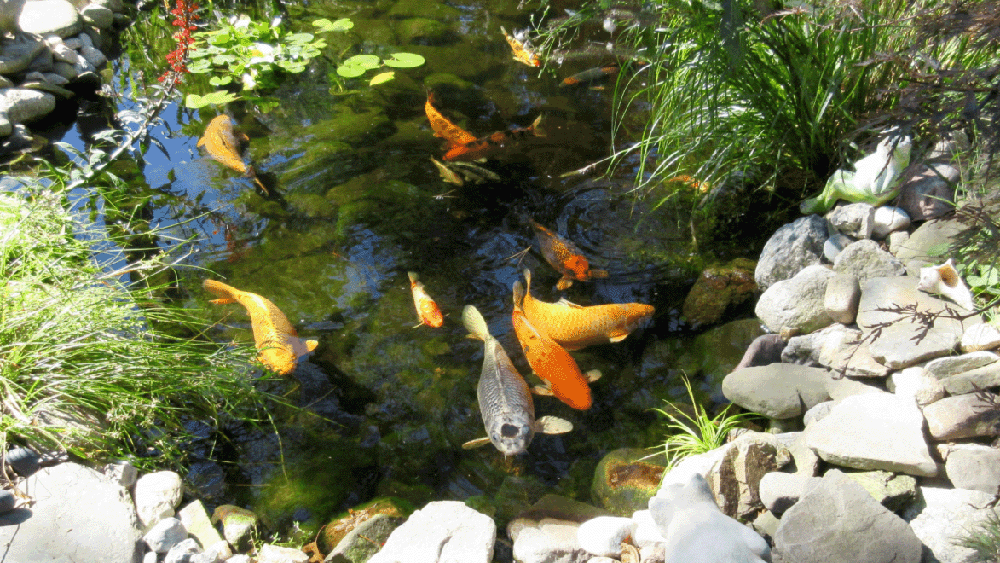
A koi lake is more than just a lovely water function — it's a watchfully balanced ecosystem. In the middle of the stability lies one crucial aspect: the koi filter lake system. Without successful filter best filtration for koi pond, koi ponds quickly become unhealthy, equally for the fish and the water environment. Whether you're a novice or a seasoned koi fan, understanding the importance and efficiency of koi lake filter is vital.
In this article, we'll investigate why koi filter lake techniques are crucial, how they perform, kinds of filters accessible, how to steadfastly keep up them, and strategies for choosing the right process for your pond.
Why Koi Ponds Need Filtration Systems
Koi fish are beautiful, robust animals — nevertheless they generate lots of waste. Uneaten food, decomposing organic matter, and fish spend may rapidly pollute lake water, leading to harmful quantities of ammonia, nitrites, and nitrates. Or even addressed, these ingredients may damage or kill your koi.
A koi filter lake process operates to keep the water clean, apparent, and biologically balanced. It eliminates physical dust, stops working hazardous chemicals, and promotes useful microorganisms growth. Without a proper filter, actually a lovely koi lake may develop into a murky, foul-smelling pool.
How a Koi Filter Pond System Works
Filter techniques in koi ponds on average serve three major purposes:
- Physical Filter
This area of the process eliminates stable spend particles from the water, such as fish spend, leaves, and uneaten food. Oahu is the first step keeping in mind the lake clean. - Scientific Filter
Beneficial microorganisms develop in bio-media within the filter. These microorganisms change hazardous ammonia from fish spend in to nitrites, and then in to somewhat harmless nitrates — a procedure named the nitrogen cycle. That is critical for sustaining a well balanced ecosystem. - Compound Filter (optional)
Some koi lake homeowners put substance media like triggered carbon to get rid of smells, discoloration, or continuing medicines from the water.
Some techniques also integrate UV clarifiers to kill algae, keeping the water crystal-clear without damaging the koi.
Types of Koi Filter Pond Systems
There are several kinds of filter techniques accessible, depending on the measurement of the lake, how many koi, and the layout of your setup.
1. Gravity-Fed Filters
In this system, water flows from the lake to the filter by gravity, on average via a bottom drain. Following filter, a push results the clean water to the pond. This startup is successful and often found in larger or professionally built koi ponds.
2. Pump-Fed Filters
Here, a submersible push brings water from the lake and presses it through the filter. That is easier to put in and greater suited for smaller or above-ground ponds.
3. Pressurized Filters
Condensed techniques allow you to position the filter under the pond's water stage or more from the lake itself. They are small and often include built-in UV clarifiers.
4. Multichamber Filters
These big techniques separate physical, organic, and sometimes substance filter in to separate compartments. They are very successful but higher priced and space-consuming.
5. Bog Filters
These organic filters use gravel beds and marine flowers to clean the water. While more “organic,” they might not be enough alone for heavily stocked koi ponds.
Choosing the Right Filter System
When choosing a koi filter lake process, contemplate the next facets:
- Lake Measurement: Know your pond's volume in gallons. Filters are rated by capacity, and it's intelligent to choose one rated for at the very least 1.5 instances your genuine volume — specifically for koi.
- Fish Fill: The more koi you have, the more spend they produce. Overstocked ponds require more robust filtration.
- Budget: Simple techniques could cost a hundred or so pounds, while sophisticated, multi-chamber techniques might surpass $1,000.
- Preservation Needs: Some filters are easier to clean than others. Try to find backflush features or easy-access components.
- Available Room: Multichamber filters and gravity-fed techniques involve more place than condensed or submersible filters.
Installation Tips for Koi Filter Pond Systems
Installation will depend on the kind of process you choose. Here really are a few basic ideas:
- Place filters on stage surface to make certain actually flow.
- Use a bottom drain when possible — it improves spend elimination and water circulation.
- Use variable piping to simplify plumbing and minimize possible leaks.
- Include a pre-filter or skimmer to prevent big dust from achieving the major filter.
- Hide equipment with gardening or filter houses to steadfastly keep up aesthetics.
If you're unsure about plumbing or sizing, consult a professional installer.
Maintaining a Koi Filter Pond System
When your filter is up and running, keeping it clean guarantees continued performance:
- Clear physical filters weekly or as needed.
- Backflush or rinse bio-media with lake water (not tap water) monthly to preserve useful bacteria.
- Change UV lights annually for algae control.
- Check for blocks or escapes regularly.
- Check water parameters with an examination set — ammonia, nitrites, nitrates, and pH degrees must certanly be tested often, specially in early stages.
Common Problems and How to Fix Them
Dark Water
- Alternative: Add a UV clarifier, increase filter, or minimize feeding.
Ammonia Spikes
- Alternative: Improve organic filter, minimize fish load, or perform partial water changes.
Filter Clogs Frequently
- Alternative: Add a pre-filter or increase washing frequency.
Poor Water Circulation
- Alternative: Reposition push, put air stones, or increase plumbing layout.
Algae Overgrowth
- Alternative: Deploy UV sterilizer and color the pond.
Final Thoughts
A well-designed koi filter lake process is crucial for medical, clarity, and beauty of your pond. Oahu is the foundation of a thriving koi habitat. While installation needs careful preparing and regular maintenance, the results are well worth it — vivid, effective koi swimming in crystal-clear, balanced water.
If you're making a lake or upgrading a vintage process, choose quality filter. Not only will your koi thank you, but your entire lake will become a peaceful, balanced sanctuary.